Hilleberg Helags 3

The Hilleberg Helags 3 is a three-season tent designed for groups looking for excellent protection in a lightweight package. Although a bit tight for three people and their gear, this tent has superb livability for two people (a Helags 2 is also available). Excellent ventilation combats condensation well in such a large tent. Two doors/two vestibules allow for plenty of gear, and a 35-inch/89cm center height works well for most hikers.
Pros
- Spectacular strength-to-weight ratio
- Straightforward design/easy pitch
- Good ventilation/condensation management
Cons
- Restricted livability for three people
- Large overall footprint limits site selection
- Head/foot entry not ideal for some people
As outdoor recreation is coming to an all-time high, a need for versatility can really come into play. Hilleberg has introduced a new line to its tents, and the Helags is quite the mobile home. Hilleberg proclaims: "Backpackers, paddlers, and bicycle tourers will all love its lightweight roominess, and since the Helags 3 weighs just 7oz (200g) more than the Helags 2, sizing up is an easy choice for those wanting even more comfort."
Those who are familiar with Hilleberg products tend to unanimously agree on at least one word—quality. The brand began in Sweden in 1971 and has been manufacturing premium tents and shelters since 1973. Bo Hilleberg, a Swedish forester, had a vision to make a product where the inner "tent" and outer rain fly could be pitched together, while still remaining "storm stable."
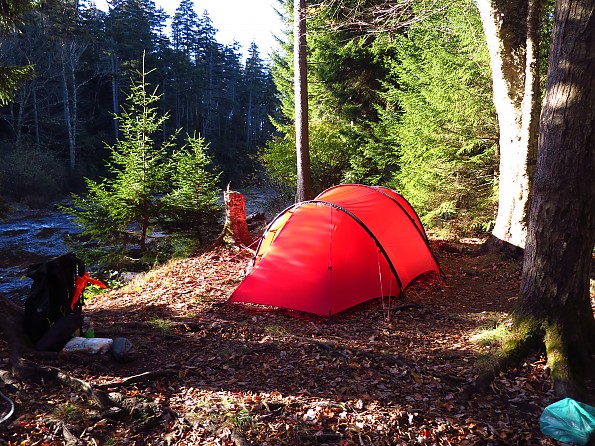
Hilleberg designed the Helags 3 to be "the ideal three person tent for mobile journeys in warmer conditions where the lowest weight is the highest priority."

While being marketed as a three-person tent, livability is best as a two-person shelter.
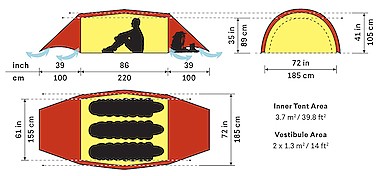
Setup/Ease of Use
The Helags 3 has several different configurations for the vestibule, however all arrangements are based on a three-pole assembly. The tunnel design can be set up with a minimum of four pegs at the vestibule doors.

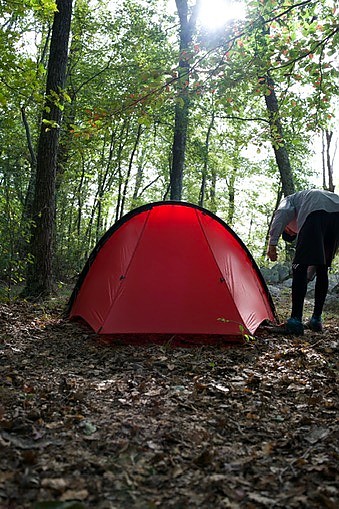


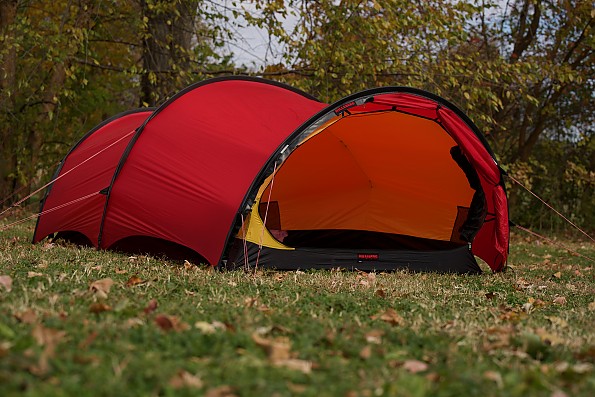
The Helags 3 is extremely intuitive, and easy to set up after the initial corners to the tent are secured. Once the tent poles are sleeved and inserted into their respective tensioner cup, a loop can easily be tensioned.

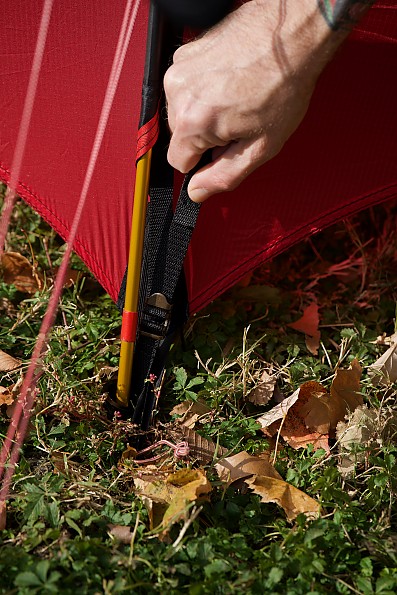
The Helags tent line is patterned after the Kaitum four-season tents, but offering superior airflow. This is the primary feature that makes the Helags a three-season tent, made for "the snow-free times of the year."
Hilleberg has a label system for its products—"Red Label" tents, like the Kaitum, are Hilleberg's lighter weight four-season tent line. The Helags is categorized as a "Yellow Label," which are "engineered for warmer climates and for the snow-free months of the year." More can be read on the Hilleberg Label System HERE.

Ventilation
Initial testing (about six nights) has shown sufficient air exchange to prevent condensation build-up overnight. Temperature range during testing was approximately 20°F to about 55°F. Although there was no rain during testing, there was significant moisture from a high dew point which tested the Helags' capabilities. [If possible, additional testing will continue during favorable conditions in the winter (no snow), and into next spring and this review will be updated.]
One specific occasion to note was in the Dolly Sods Wilderness of West Virginia, when the Hilleberg Helags 3 was pitched along a stream in late October.
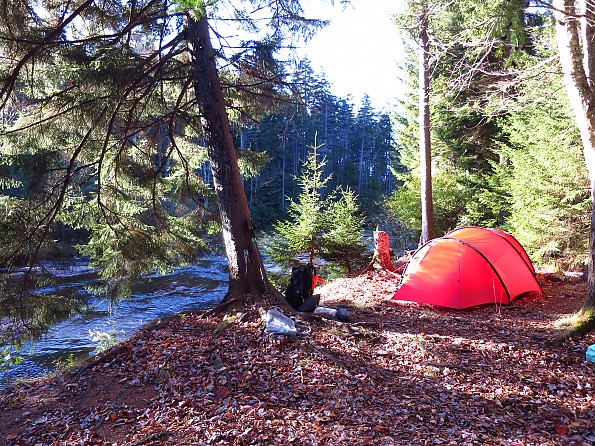
Both vestibules can be opened to maximize ventilation, with the additional benefit of bringing the outdoor scenery into home.

Weather Resistance
Currently, the Helags 3 has not found inclement weather. Having used a Hilleberg Tarp 5 for well over thirty uses, the silicone treated ripstop Kerlon 1000 (the same fabric as the Helags 3) has not failed. More can be read on Hilleberg fabric specifications HERE. The Helags was designed primarily for rain protection, as the curved pattern along the bottom of the tent is not designed to prevent snow intrusion.
Stability
The "tunnel style" tent design common with many Hilleberg tents, is touted by many to be among the most stable tents made. Testing during the autumn of 2021 in the mid-Atlantic USA has been extraordinarily mild—although not battered by wind and rain, it is easy to tell that this shelter can stand remarkably poor weather.
With the vestibules pegged, the Helags 3 is incredibly fortified.


The outer guy lines must be used to stow the vestibules. This setup reduces structural integrity, but is intended for mild and warmer climate.

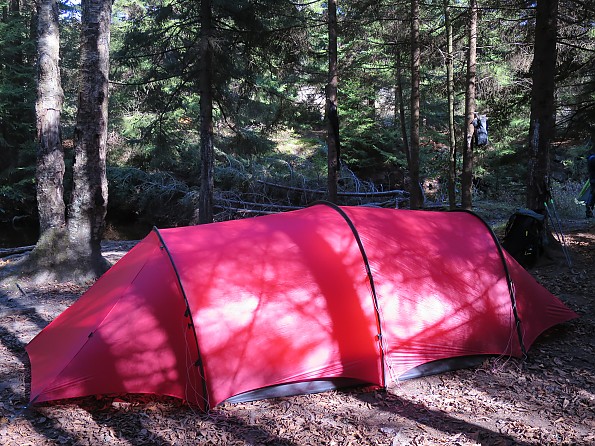
Room & Storage
As stated by Hilleberg, the Helags 3 has "a good amount of room for two occupants and their gear." Also, "the two vestibule configuration results in an inner tent with vertical ends, near vertical sidewalls, and full sitting height throughout the tent."
Industry-wide, it can be agreed that the personnel capacity of a tent by its description is ambiguous. With the tent inner being 61 inches in width, three 20-inch sleeping pads can be accommodated. Storing three people’s gear, getting in/out of the shelter without being obtrusive, cooking during a storm are all completely different scenarios.
Hilleberg also offers a smaller available size in the Helags line, the Helags 2.

Setting this aside, this tent is spectacular for two people to use—livability gets a perfect score, with the exception of extremely tall hikers.
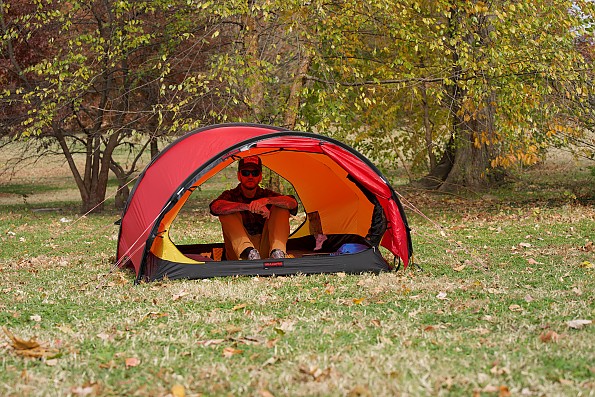
With its two doors and vestibules, more than ample storage is available for trekking poles, footwear, packs, etc.
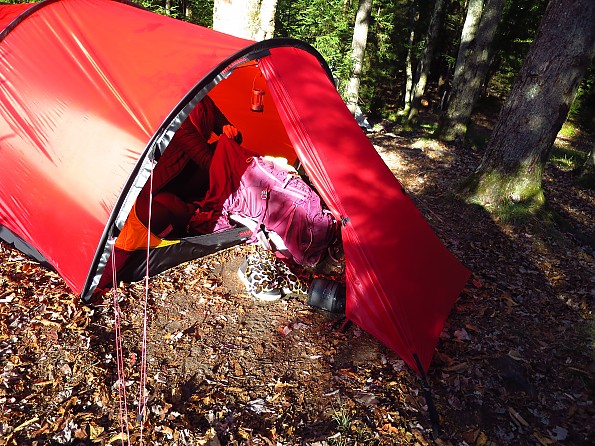
Features
The Helags 3 is teeming with features.
Coated on both sides, the silicone treated ripstop "Kerlon 1000 outer tent fabric makes for a supremely lightweight tent that is still quite strong."

The tent inner has a "bathtub" type floor, which helps prevent precipitation from splashing in near the ventilation.

Typical to most Hilleberg tents, the Helags 3 has a "linked but separable inner and outer tent for simultaneous pitching."
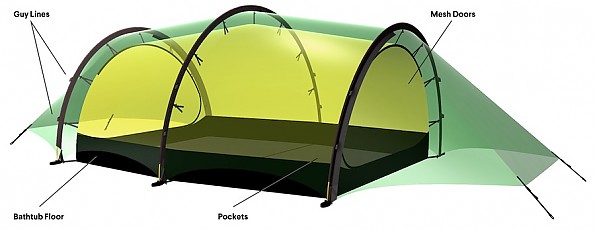
DAC Featherlite NSL GREEN poles are standard for most Hilleberg models. DAC, an aluminum tubing manufacturer, has developed a "green" anodizing process, which eliminates nitric and phosphoric acid use in production.

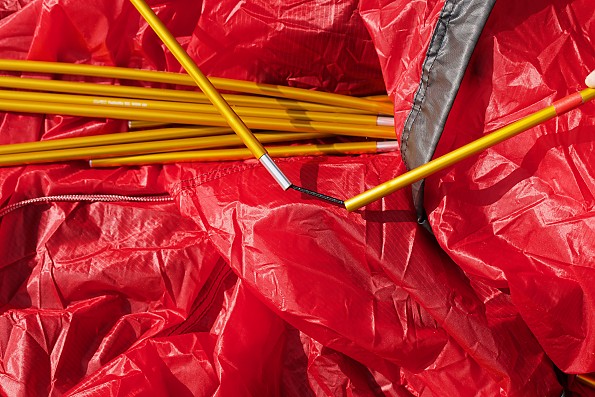
16 Y-Peg UL tent pegs are included.


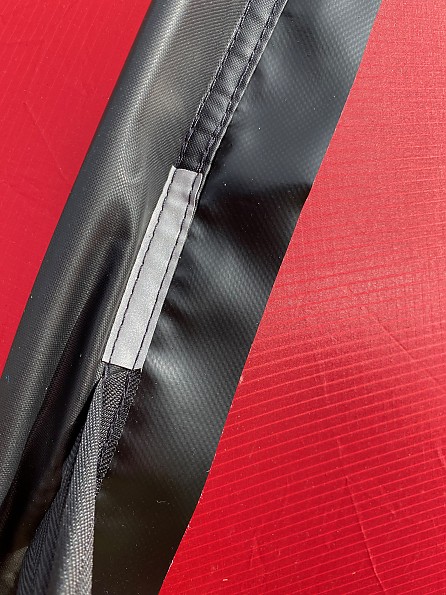

Both the Hilleberg Kaitum and Helags models offer an accessory mesh Inner tent which provides 360° views.

"An optional footprint covers only the inner tent area and not the vestibule. It connects directly to the tent. and can be left attached during pitching." Neither of these accessories were tested, but could potentially add even more versatility to the tent.
Packability
The Helags 3 has separate storage bags for the tent body, poles, and pegs. Although this can easily be overlooked, the option to pack the tent poles on the exterior of a pack, keep a wet rain fly separated from other gear, and store dirty tent pegs is critical for gear hygiene.
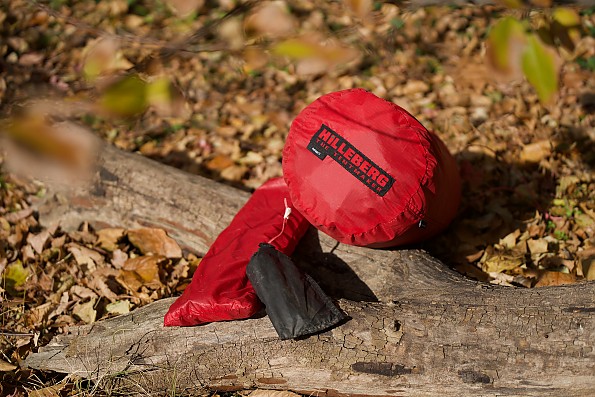
The tent body/rainfly can be compressed a significant amount more than the tent bag.

Construction & Durability
So far during the course of testing, the Helags 3 has shown first-rate quality. No signs of wear whatsoever were noted. It must be echoed that the caliber of Hilleberg’s products are unmatched. Hilleberg is easily the top brand found on expeditions from the Himalayan mountains, to Antarctica and beyond.
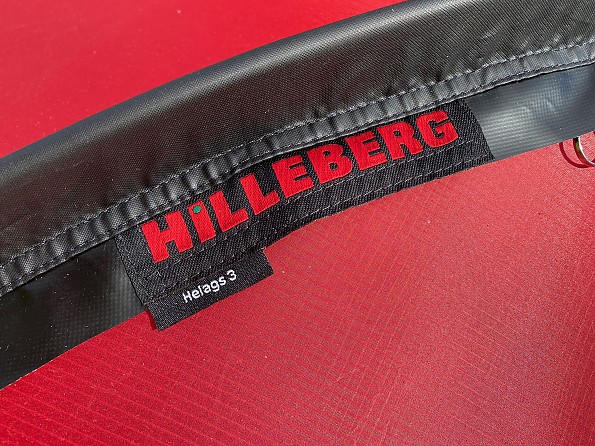
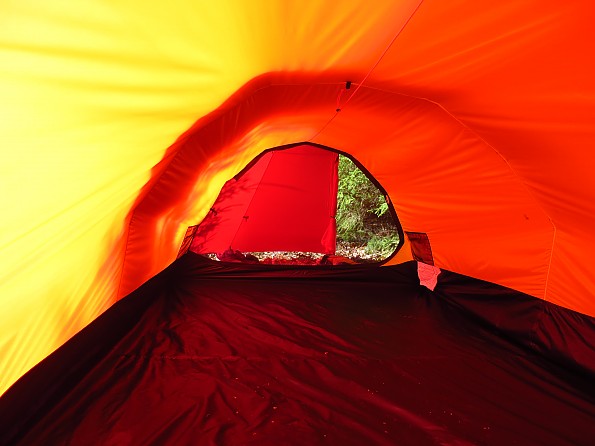
Like the Hilleberg Staika and Tarp 5 (100+ nights) I've used, the Helags 3 is of the same excellent construction. From impeccable stitching to the absolute best quality hardware, I expect the Helags 3 will last for hundreds and hundreds of runs.
If looking for a lightweight, stable tent with maximum livability for two, a tent for sleeping for three, Hilleberg has made its mark with the Helags 3 tent.
Conditions
The Hilleberg Helags 3 has been tested from October through December 2021 for approximately six nights in the mid-Atlantic USA—Dolly Sods Wilderness/Monongahela National Forest, and the Appalachian Trail in Maryland and Pennsylvania. If possible, additional testing will hopefully continue during favorable conditions in the winter (no snow), and into next spring. Temperature ranged from the upper 20°F mark, to about 55°F. No rain reported, and winds were relatively mild- gusts to about 25mph.
Many images from this review are thanks to Dean Jankovic, a professional photographer based in Baltimore, Maryland.
Background
I have personally tested many different size and capacity tents over the last few decades—the Hilleberg Staika, Hilleberg Tarp 5, along with many other styles of tents, tarps, and hammock systems.
Source: received for testing via the Trailspace Review Corps
(Sample for testing and review provided by Hilleberg)
Your Review
Where to Buy
You May Like
Specs
| Price |
MSRP: $1,065.00 Current Retail: $1,275.00 Historic Range: $1,065.00-$1,275.00 |
| Minimum Weight |
2.3 kg / 5 lbs 1 oz |
| Packed Weight |
2.6 kg / 5 lbs 12 oz |
| Outer tent fabric |
Kerlon 1000 |
| Poles (9 mm) |
1 x 328, 2 x 285 cm / 1 x 129.1, 2 x 112.2 in |
| Pegs |
16 Y-Peg UL |
| Best Use |
three-person tent for mobile journeys in warmer conditions where the lowest weight is the highest priority |


